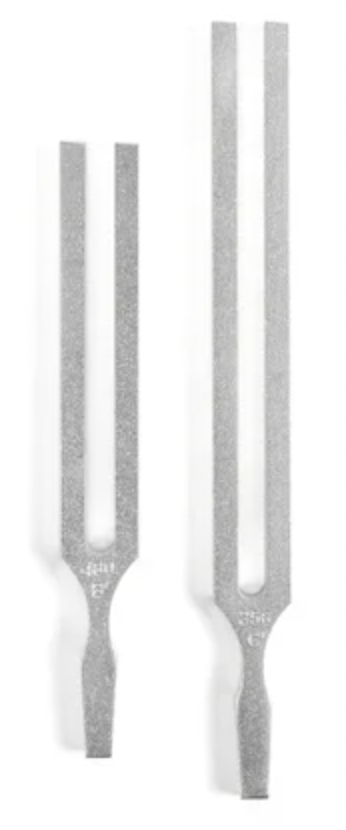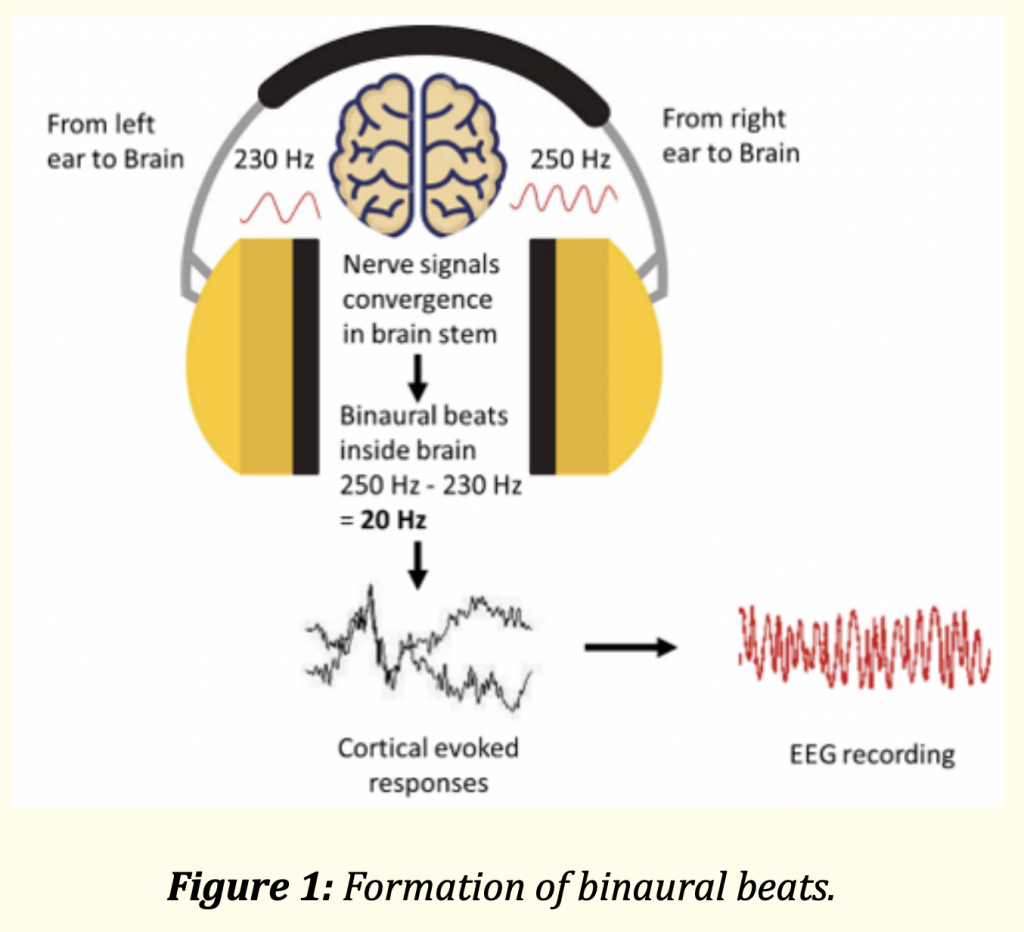To accurately make an audio paper about sound healing and the effects of binaural beats I felt it was appropriate to explore the history of these practices.
Binaural beats were first discovered by physician Heinrich Wilhelm Dove in 1839. (Kerna, A, N. 2) Dove theorised that when presented when each ear hears an independent frequency, “the brain notices the phase difference between the frequencies and works to balance that imbalance.”(Kerna, A, N. page, 2). The study of binaural beats was not revisited until much later in 1973, by Gerald Oster, with the essay ‘Auditory Beats in the Brain’ published in the Scientific American. Oster explains that by simultaneously striking two tuning forks with different characterised pitches binaural beats occur. Through Oster’s research and experimentation, it is known that binaural beats are only perceived if the carrier tone is less than 1000Hz.

(Image above shows tuning forks, similar to the ones used by Dove in 1839.)

Figure 1: (Kerna, A, N. page, 2)
Figure 1 depicts the formation of binaural beats, showing the cortical evoked responses translated into an EEG recording, which records brain activity and by using it researchers can see the results of binaural beats in more measurable terms. “The interaction of the two tones within the auditory brainstem generates a third frequency equal to the difference between the two tones delivered” (Kerna, A, N. page 3)
Binaural beats are available on all free and payed streaming services, including; Spotify, Youtube, Apple Music, Sound Cloud, Band Camp. The accessibility of binaural beats allows people of all demographics to use sound as a tool for healing and wellness, compared to pre-streaming-services when binaural beats were only accessible to people who knew about them and had the resources to experience them.
Nicholas A Kerna., 2022, Binaural Beats: Novel Approach to Managing Certain Physiological and Psychological Conditions